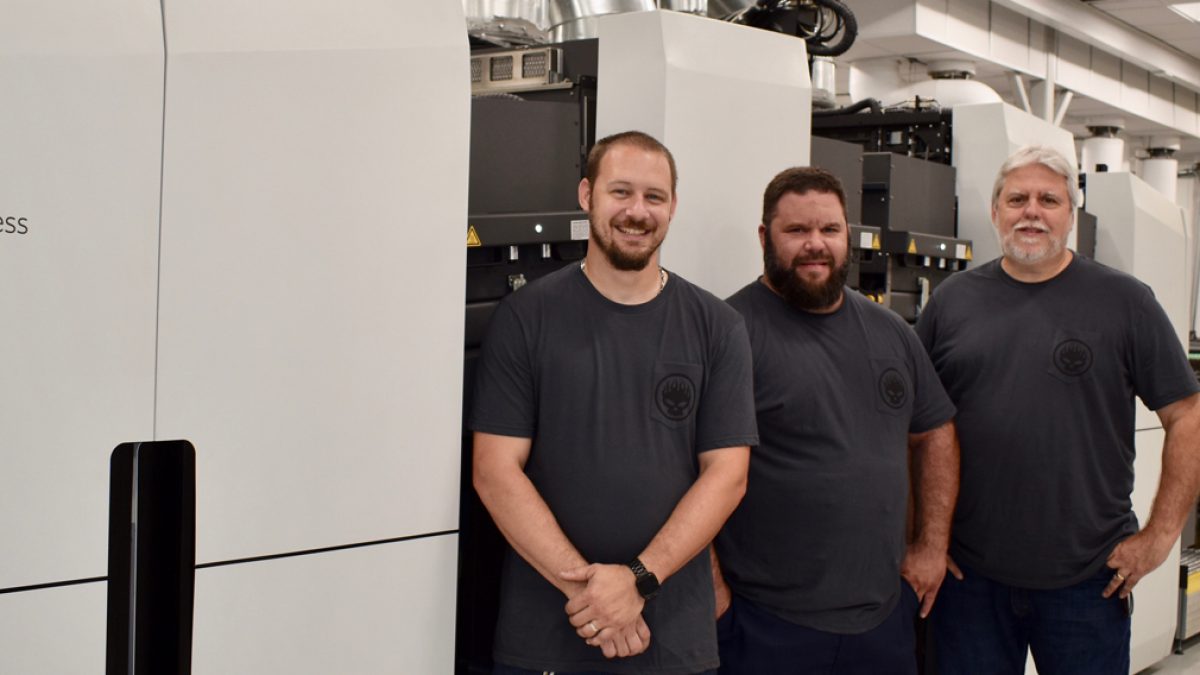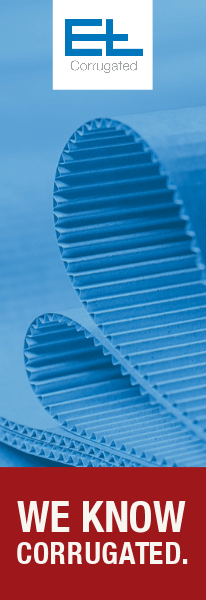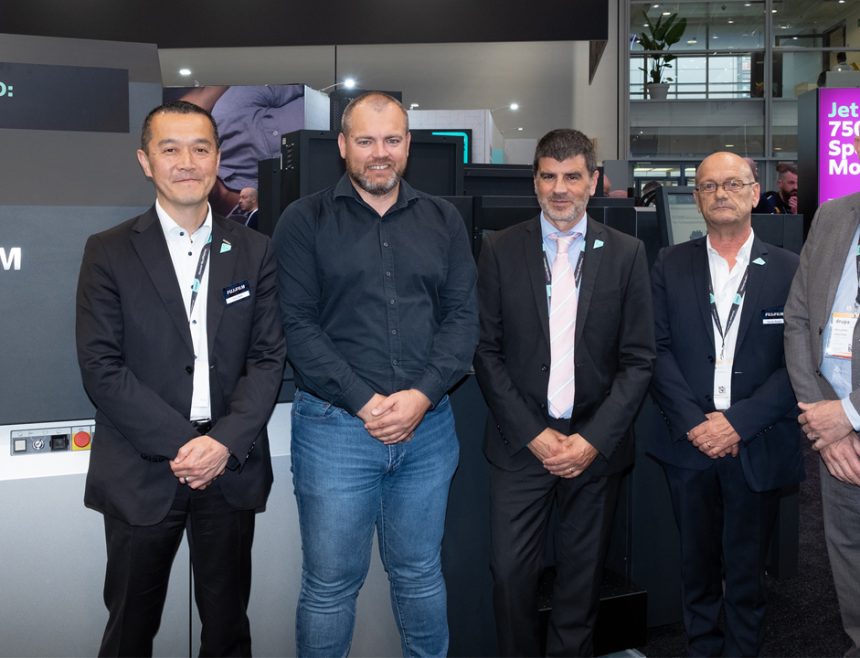For the past four months, a Hebron, Kentucky, folding carton operation has been the proving ground for a customized hybrid digital printing solution that combines flexographic and digital technology with platen diecutting. The industrial scale folding carton line is said to be the only one of its kind in the world.
‘Zumbiel Digital’ evolved from Zumbiel Packaging, one of the largest independent suppliers of beverage multi-pack cartons in the U.S. The company was established in 1843 and has been in the Zumbiel family since 1876. Serving the specialized beverage market required a different digital solution, beyond what existing options could offer, so the company decided to get proactive and search for alternatives that could handle larger formats at higher volume, delivering speed to market, variable graphics and premium quality.
The corporate philosophy has always been high throughput. Ed Zumbiel, President of Zumbiel Digital, says the niche is running large rolls of paperboard on flexo presses at 1,200 fpm producing 12- and 24-pack beverage cartons. Typical order quantities for large beverage customers are in the “hundreds of thousands to the millions.”
After several years of research, the company formulated a plan — integrate a web flexo press with a Kodak Prosper 6000S production inkjet press. The initiative would require the expertise of market leaders in micro-electro mechanical systems, inkjet printing, workflows, coating chemistry, press manufacturing, diecutting and control systems.
The end result was a true feat of engineering that defies conventional digital. The 11-unit web press plus platen diecutter combines flexo printing for static design elements with digital printing for variable design, running high volumes at high speeds. Zumbiel likes to joke that they built a Frankenstein.
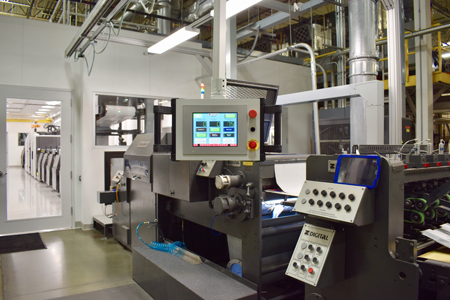
The Configuration
Marrying all of the components of the hybrid line was not a simple process. In fact, when Zumbiel first approached Kodak at its Enterprise Inkjet Systems Division headquarters in Dayton, Ohio, about an hour north of Hebron, Kodak declined the opportunity. “The real question for us was to ensure effective transportation of the substrate,” Rick Mazur, Worldwide Director of Market Development for Packaging/Labels, explains. “We realized that how you move that substrate through the press was critical to registration and image quality, and at that time, we did not have much experience with folding carton substrates. We just knew they were thicker and had a tendency to bounce and move. But when we successfully modified the tight web configuration on the commercial side we learned a lot and our engineers came back to Ed and said, ‘This is a really good idea. We want to do it.’”
The web begins at a Martin Automatic unwind and then travels to a web cleaner, two flexo units (the first is a priming unit), the four-color Prosper press, seven more flexo units and a Zerand platen diecutter. The printing portion is enclosed in a 4,000-sq-ft climate-controlled room within the 320,000-sq-ft beverage packaging facility. “Our focus for the hybrid line is on food, beverage and pharmaceutical so we wanted everything to be ultra clean, if not sterile,” Ed Zumbiel says.
This was the first installation of a Kodak Prosper press for folding carton production. The 6000S hybrid model combines flexo and inkjet within the same web path, achieving litho-like print quality. It uses Stream Inkjet Technology for a digital print width of 620mm (24.5 inches). When printing the standard resolution of 600 x 600 dpi, it can run 300 mpm (1,000 fpm), or at 200 mpm (650 fpm) when printing 600 x 900 dpi.
Kodak’s nano-particulate pigment ink and intelligent inter-station drying allows customers to print high ink coverage with high quality at high speed, according to Mazur. The Stream Inkjet Technology prints on uncoated and coated folding carton substrates. “Our sweet spot is between 14 pt and 24 pt board,” Zumbiel says.
Color matching is critical. “In our world one of the most important things is hitting brand colors — large carbonated soft drink customers are extremely demanding with respect to their colors,” Zumbiel says. The press can hit over 85 percent of the Pantone universe digitally and 100 percent, including metallics with flexo.
The water-based Kodak inks and fluids are FDA approved for indirect food contact. “That was another one of our requirements,” he says. Mazur says Kodak Packaging inks are compliant with Swiss Ordinance and Nestle standards for use with indirect food packaging, which is critical for major brands and to meet local requirements worldwide.If a print head gets clogged it can be flushed and cleaned at a separate recovery stand next to the press. Spare heads are kept in inventory to replace a clogged one, avoiding having to shut down the press.
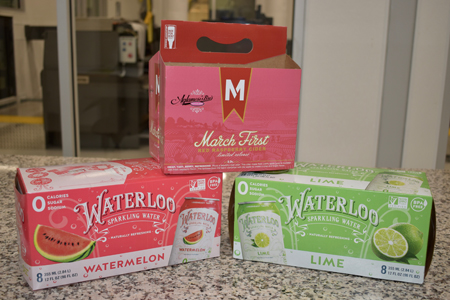
The press can be run in straight analog or digital mode. “The machine is really quite unique because we can run hybrid or just digital,” Zumbiel says. “We can print either aqueous or UV coating or both at one time. We can apply a flood aqueous and a pattern UV, and we can print on the backside and apply an eco-friendly grease barrier with the flexo units. Between running two different UV, aqueous coatings, backside printing, and functional barriers, we have a lot of flexibility. We wanted the line to be very much consistent with a high-end folding carton line in terms of the functionality and capabilities that our customers expect.”
An ideal hybrid job would be a large volume order that requires variable graphics — for instance for a national promotion, such as the World Cup featuring hundreds of different images of soccer players in combination with static trade dress. “That would be a perfect hybrid job. You use the inexpensive flexo ink for the bulk of the package and then maybe 10-20 percent coverage with digital ink for the variable graphics,” Zumbiel says.
“The big drivers around digital are short runs, driving promotions, adding variable content, and more SKU proliferation,” Mazur says. “The concept with Zumbiel Digital’s press is aimed at leveraging conventional low cost analog printing so they can produce cartons with 75 percent or more conventional flexo ink coverage and the balance, the variable piece, with digital. You’re doing it very cost-effectively and you’re doing it at run lengths that exceed 100,000 impressions, which is tough for other technologies to do digitally cost-effectively.”
Nimble and Quick
The added efficiencies have been significant, especially with turnaround times and the ease of file handling. “With digital, customers can email the file in pdf and we can go right to press, output an actual press proof and FedEx it back to them,” Zumbiel says. If the job requires a non-standard die, the in-house die making department can produce a platen die in six to 12 hours. Also, the company keeps in stock the more popular paperboard grades, such as CUK, SBS and CRB.
Of course, hybrid jobs require flexo plates, which result in a longer, more complex process, combining flexo and digital dots, however, Zumbiel says the large graphics houses that were originally “spooked” by the concept have now “figured it out.”
With the new hybrid line the time to produce one million unique 12-packs is five business days, from receipt of art to shipment of finished job. “This is possible because we utilize Kodak’s industry-leading continuous stream inkjet technology and we operate in web format. There is no upstream sheeting or offline diecutting. It’s a very fast, very compressed workflow,” Zumbiel says.
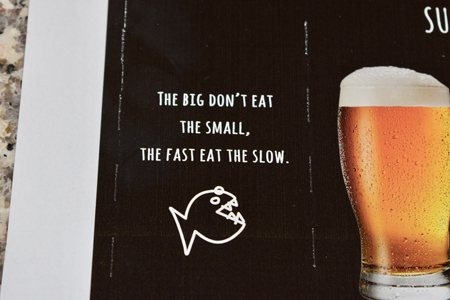
Speed to market is a value proposition that has served Zumbiel well over the years and is embodied in the company’s mascot, a piranha, along with the phrase: “It’s not the big that eat the small; It’s the fast that eat the slow.” It represents a competitive advantage that today is quite appropriate as digital begins to eat into analog packaging.
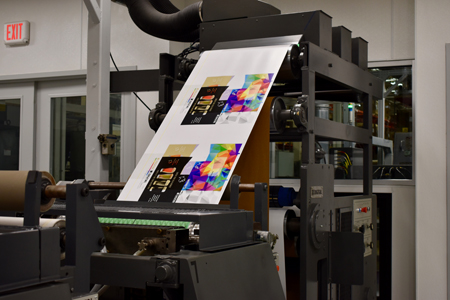
Web to Box®
Zumbiel Digital recently introduced a web to box solution where customers can log onto the web site, upload their artwork and have cartons delivered within three to four days. The site is especially useful for craft brewers whose smaller order sizes often make analog printing costly. “It satisfies a need for speed to market, low order quantities and complete customization for these guys,” Zumbiel says. “You can have a quantity of one to 10,000. It doesn’t matter to us.”
He jokes that this new web service – ordering online – is like Vistaprint for craft beer packaging. “We even accept PayPal, just like the dot-com geeks.”
Short or long runs are fair game. “We’re the hybrid people who offer production digital, long run digital. People have asked me, ‘What’s your cutoff between litho and digital? And I say, ‘We don’t know. We don’t care.’ We’re focused on long runs with variable data, mass customization on a global scale. We’re not trying to compete with short run litho.”
The Next Step
The new line is currently running one shift with preparations underway to add a second shift very shortly. Plans are also in the works to add another hybrid press as customers increasingly embrace the technology. “It’s an intriguing piece of equipment. The customers all love it because they have never before seen folding cartons printed digitally at over 600 ft per minute with diecut blanks ejected at the tail end of the press. It’s pretty cool to watch,” Zumbiel says.
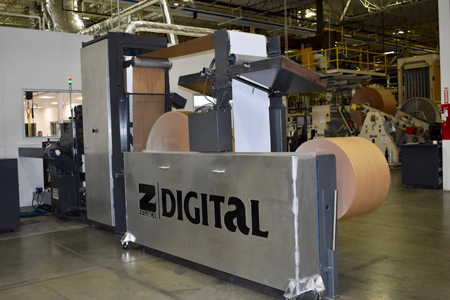
He is confident that digital is going to become a major force in the worldwide folding carton market. “We’re just trying to go where we know the future is headed.”
While Zumbiel’s initiative is the first of its kind, Mazur anticipates the installation of similar lines for folding carton as well as other industries. “Based on customer requirements, we intend to integrate it with a range of flexo stations from suppliers such as Uteco, Global Web and Tresu, and some customer’s requests show that they want to integrate it with their current flexo and gravure presses. It’s about building a custom engineered solution based on what the client has in terms of conventional assets and making the most of those conventional assets,” he says, adding that Zumbiel Digital opened up opportunities for Kodak. “Ed showed us what is possible with our technology. We see the impact not only in folding carton but in corrugated and in labels and in flexible packaging. We see a lot of opportunity to scale this technology and grow.”

